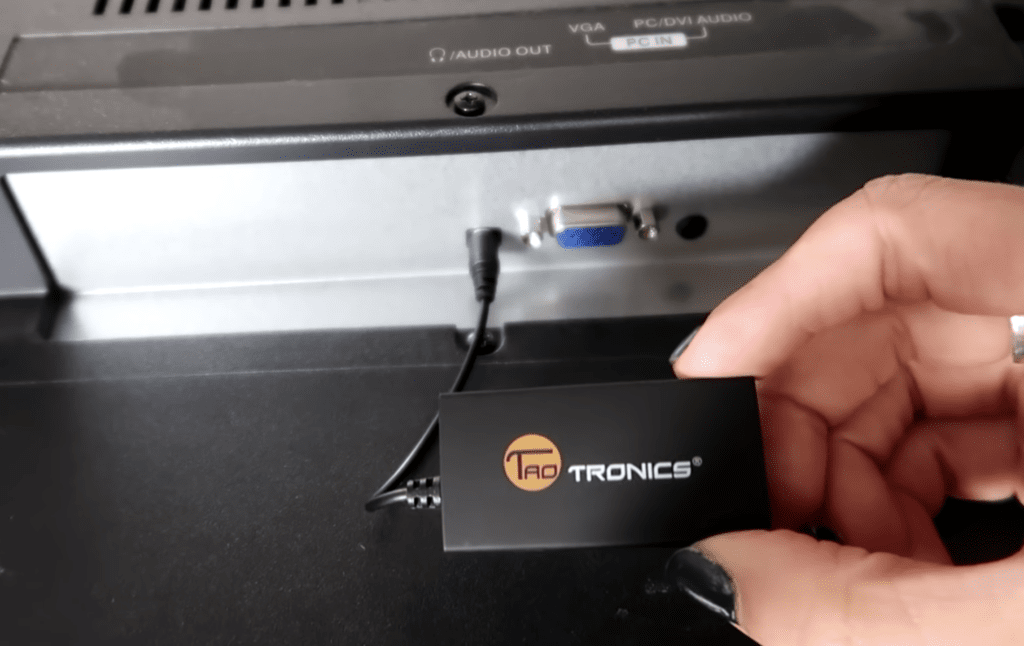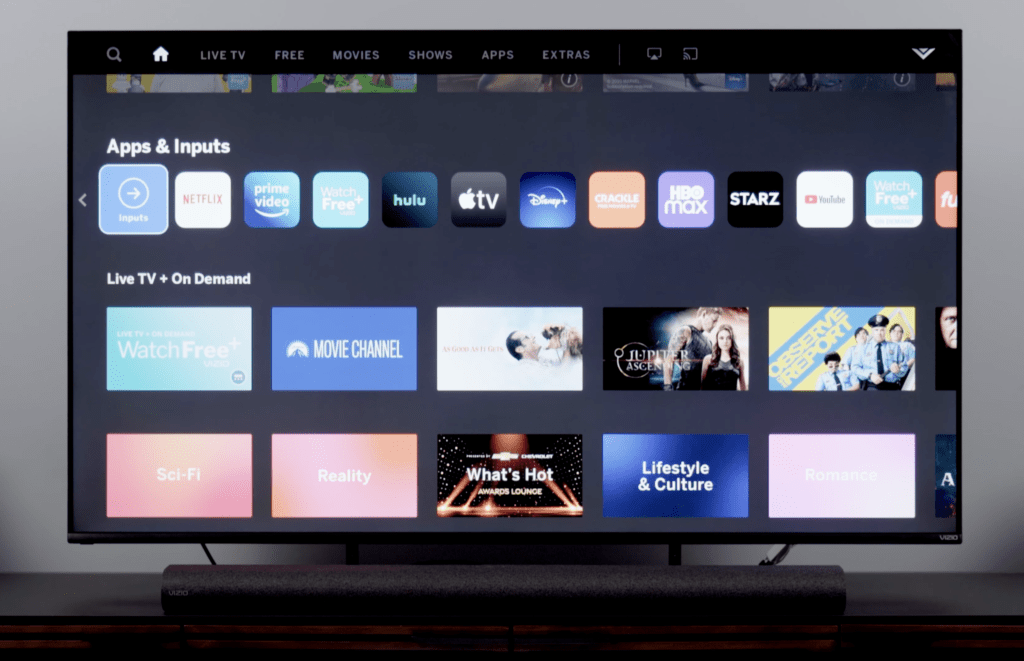You know, TVs have truly evolved from just being simple “idiot boxes.”
Now, smart TVs come loaded with so many cool things. They can connect to the internet, have built-in apps, and additional features that really make your watching experience a whole lot better.
Some smart TVs even come with Bluetooth, allowing you to pair gadgets like headphones or soundbars.
If you’re in the market for a new smart TV and don’t want it to cost you an arm and a leg, you should check out Vizio. They offer fantastic picture quality without you needing to empty your pockets.
I know this because not too long ago, my brother requested my company for some TV shopping (he knows I’m a bit of a tech geek). We browsed through online stores and even walked into a few retail shops to see the TVs in real life.
Vizio TVs really captured his attention. But there was one small thing that nearly stopped him from getting one. It was the Bluetooth functionality.
Let me clarify that.
Do Vizio TVs have Bluetooth?


Yes, they actually do. But, it’s only Bluetooth Low Energy (LE), mainly used to connect the TV to the Vizio Mobile app. You can’t use it to pair your Bluetooth headphones or speakers, unfortunately, as they use Bluetooth Classic.
Vizio Mobile, previously known as the SmartCast Mobile app, is a one-stop-shop app that lets you control and manage Vizio smart devices right from your phone or tablet.
What’s the difference between Bluetooth Classic and Bluetooth Low Energy?
The critical thing to note here is that Bluetooth Classic and Bluetooth LE are two protocols that don’t work together. A Bluetooth Classic device won’t talk with a Bluetooth LE device.
Let’s take a look at a comparison table showcasing the major differences between Bluetooth Classic and Bluetooth LE:
| Bluetooth Classic | Bluetooth LE | |
| Design | Designed for continuously streaming data | Designed for low-power operations |
| Use | Used by wireless headphones, wireless keyboards, file transfers, in-car entertainment systems | Used on low-bandwidth applications, mobile apps for device control, fitness trackers, medical devices |
| Power consumption | High energy consumption because radio is continuous | Low energy consumption by more efficient radio usage |
| Range | Shorter range | More flexible range |
Bluetooth Classic tends to use more power because it keeps its radio running constantly, unlike Bluetooth LE that only activates its radio as briefly as possible.
Because of its continuous radio operation, Bluetooth Classic achieves higher data transfer rates compared to Bluetooth LE.
As a result, Bluetooth Classic is better suited for tasks like wireless audio and file transfers, while Bluetooth LE is more efficient for low-bandwidth tasks.
This explains why wireless headphones and speakers typically use Bluetooth Classic, while apps that control devices, like Vizio Mobile, favor Bluetooth LE.
Can I use the Vizio Mobile app as a Bluetooth workaround?
If you are familiar with Roku TVs, you’ve probably heard you can use the Roku app as a Bluetooth workaround.
Well, you can’t pair your Bluetooth headphones directly with your Roku TV, but you can connect them to your smartphone and use the private listening feature on the Roku app.
Unfortunately, this workaround isn’t available with the Vizio Mobile app.
At least, not yet.
I’m pretty confident that many Vizio TV users would love this feature in Vizio Mobile. It would be great to be able to use wireless headphones or speakers with their Vizio TVs.
Perhaps it’s just a matter of time until Vizio adds a “private listening” feature to their app.
But fret not, you can still connect your Bluetooth headphones to your Vizio TV using alternate methods – just not with the Vizio Mobile app.
What are the alternative ways to connect my Bluetooth headphones or speakers to my Vizio TV?
Your direct pairing option with the TV might be a no-go, and the Vizio Mobile app may not be of help, but don’t lose hope yet – there are still ways. You just need to think a bit out of the box.
1. Use a Bluetooth transmitter

A Bluetooth transmitter is a nifty little device that you can plug into gadgets that aren’t Bluetooth-enabled to give them that capability.
These transmitters are commonly used in situations like airplane in-flight entertainment systems or older TV models. However, even newer smart TVs that don’t have built-in Bluetooth (like Vizio TVs) can benefit from one.
Here’s how it works: plug the Bluetooth transmitter into your Vizio TV’s headphone jack (or another audio out port), then pair it up with your Bluetooth headphones or speakers. Bingo, you’re now connected!
When shopping for a Bluetooth transmitter, there are a few things to look for. Choose one that uses low-latency technology – this means that your audio will transfer with virtually no delay.
Also, consider the Bluetooth signal range. A transmitter that can pump a signal up to 100 feet will give you the freedom to move around, even into the next room over, without losing connection.
Lastly, look for a transmitter with solid interference tolerance. Bluetooth and Wi-Fi signals share the same frequency, which can sometimes cause interference. A quality Bluetooth transmitter will make sure your signal stays strong even in these conditions.
2. Connect to the Audio port
Another option you have is to plug your Bluetooth speakers directly into the audio out port on your Vizio TV.
I know, it sounds counterintuitive – the whole point of Bluetooth speakers is that they’re wireless, right? But stick with me here:
Even though you might have to get a bit creative to hide the wires, at least you’re still using your speakers. That’s better than your Vizio TV being stubborn and not connecting via Bluetooth.
Sure, it’s not perfect, but it could be a decent temporary fix.
After all, you don’t want your Bluetooth speakers just standing around looking pretty, and buying a new smart TV just for Bluetooth seems like overkill.
If this sounds like a plan, your next step should be to inspect the connections on your Bluetooth speaker and make sure they’ll jive with your Vizio TV’s audio out ports.

Look for a red and white audio output port on your Vizio TV, and check if your Bluetooth speaker has an auxiliary port. If confirmed, you can connect the two devices using an RCA cable.
Once your Bluetooth speaker is connected, you must turn off your Vizio TV’s built-in speakers.
Press your Vizio remote’s Menu button. Scroll down to Audio or Audio Settings, then select Speakers. Make sure the TV Speakers setting is turned off.
Conclusion

Vizio TVs do come with Bluetooth, but it’s the Bluetooth Low Energy (LE) version. This type is primarily for connecting your Vizio TV to the Vizio Mobile app, and unfortunately, it doesn’t play nice with your Bluetooth headphones or speakers.
Sadly, the Vizio Mobile app can’t serve as a workaround for this Bluetooth hiccup.
But don’t despair! You can still enjoy your Bluetooth headphones or speakers by either using a Bluetooth transmitter or plugging them straight into your Vizio TV’s audio out port.
If having Bluetooth is a deal-breaker for you, it might be worth exploring smart TV brands with Bluetooth technology.

